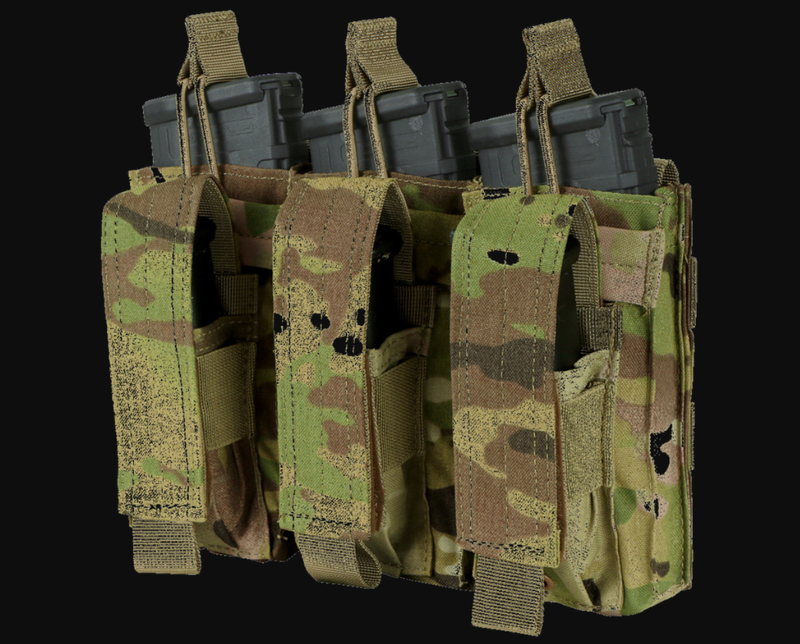Steel vs Ceramic
Over the past few years, body armor has exploded in popularity. Go back ten years, (even just 5), and body armor was something used almost exclusively by military and police. And even many police forces didn't have affordable and reliable access to hard-plate body armor, and would mostly rely on issued soft-panel, level IIIA armor. And while it's certainly better than nothing, where does that leave them against a threat with a rifle?
However, there's been a shift. As 2nd Amendment rights have come under further attack, and as more people value preparedness and defensive measures, body armor has become increasingly more popular with shooters everywhere. And now the big question has become: Steel Armor, or Ceramic Armor? They each have their own benefits (and drawbacks), and each one has it's drawbacks as well. So as a prepared citizen, which should you choose?
Steel Body Armor
As long as there have been firearms, there has been armor against them. Steel armor traces it's lineage all the way back to the 16th century, when blacksmiths would fashion a breastplate out of mild steel, and shoot it for the customer to prove it's strength. If you've ever seen medieval armor and wondered why they all seem to have a dent, that was the proof mark that the bullet stopped. In fact, these old fashioned getups could really be considered the first plate carrier for steel armor as well.
As technology in woven soft armor, composite armor, and ceramic armor advanced, steel armor plates fell out of fashion. Not necessarily because it couldn't do the job, but because other plates were typically lighter, or more effective in specific areas. However, with advances in steel alloys, hardening process, and renewed interest in body armor, steel plates are back in vogue.
So why the resurgence? In short, steel performs comparatively for a fraction of the cost. If my only concern is stopping bullets, I can pick up steel plates that will stop an endless supply of handgun or light rifle rounds for a fraction on the cost of ceramic plates.
Of course, there are certain drawbacks. Steel armor is HEAVY. In some cases when it comes to steel vs ceramic armor, steel is twice the weight. And while the steel itself may stop an endless barrage of bullets, the anti-spalling coating may feel differently about the situation. With cheaper steel plates, the anti-spalling coating may shed after a few rounds, leaving bullet fragments and ricochets to deflect into the user. Not exactly ideal.
However, it's worth noting that this isn't always the case. High quality proprietary coatings like on the INSERT LINK HERE plates mean you never have to worry about spalling, with steel that stops every round.
Advantages
- Cost
- Shelf-Life
- Durability
- Thin Profile
Disadvantages
- Spalling
- Ricochet
- Weight
Ceramic Body Armor
Why even bother with ceramic armor then? If AR500 steel body armor is so effective at protecting you, why wouldn't everyone just stick with that?
It's a valid question, and it really depends on your use. The fact is, ceramic does give you some luxuries that steel doesn't, and it's used by the best of the best for a reason. Delta Force doesn't run steel armor, they use ceramic, and there is a good reason why.
Most noticeably, ceramic will always be lighter. With the same protection level, ceramic armor can be up to 50% lighter. And if you're already hauling a lot of gear, saving 3-4 pounds on each plate adds up quickly. This effect increases with the stronger armors as well.
It's also more effective at the higher levels. Believe it or not, armor-piercing rounds like the M855/SS109 are more effective at punching through steel than ceramic. This is because they were originally designed to punch through a Russian steel helmet, and were brought into use really before ceramic armor hit the scene. Americans were still using Kevlar flak-jackets from Vietnam, and plate-carriers weren't yet the hot thing. Not to mention, it will stop a bullet the same regardless of angle. Steel armor is prone to a ricochet off the plate if shot at too shallow of an angle, where ceramic will absorb the bullet no matter what.
Advantages
- Lighter
- More Effective Against AP rounds
- No Ricochet or Spalling risk
Disadvantages
- Cost
- Can be Damaged
So Which Armor Do I Choose?
It's going to come down to what threat levels you face, and what your needs are. Most of us are not assaulting a terrorist stronghold daily, and not running miles in our plate-carriers, and are not faced with life-and-death situations often. Be honest with yourself, where is this going to get the most use? Are you throwing it in the back of your hot trunk to bounce around and keep for a worst-case scenario? Then you're like most people, and steel plates will absolutely protect you when you need it. However, if you're like John McClane, and you frequently find yourself needing to save the world, you might want to spring for ceramic.
But the most important thing is that no matter what you wear, all of our armor will get you back home safely. Any armor is better than none. If budget is a constraint, grab a set of steel plates. Or if heavy steel means you're less likely to wear it when you need it, than go ceramic. The most important thing, is that you have something. Whatever it is, Smith will make sure you make it home safe.



